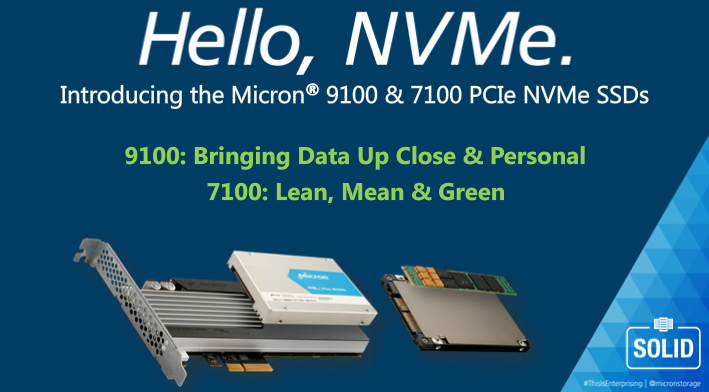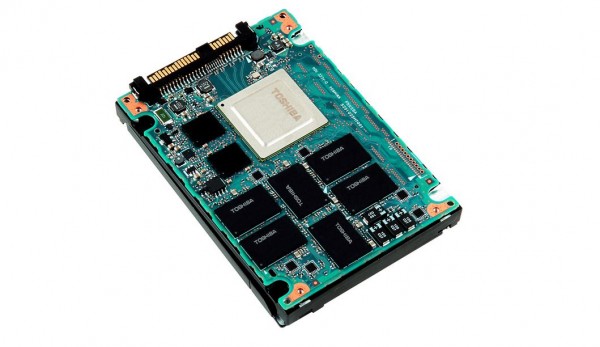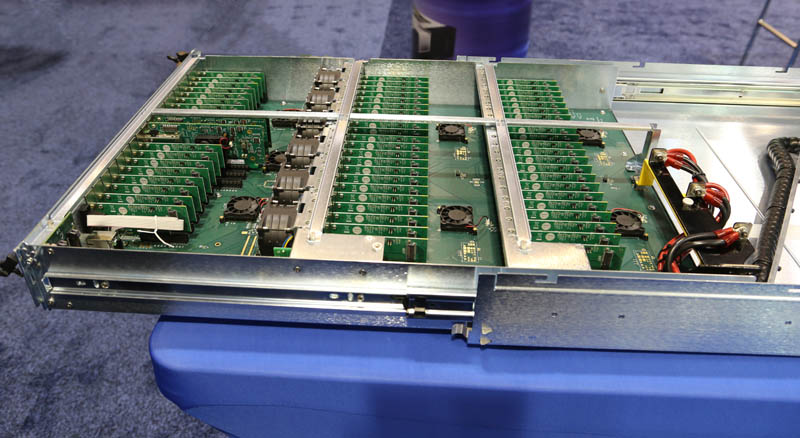Over the next few days the tech press is going to be covering Flash Memory Summit 2016. After reading dozens of releases, press briefings and seeing the show floor during setup there are a few trends we wanted to highlight. If you skip all of the releases, this is the summary to read.
Trend #1: 3D XPoint – Everywhere
SSDs have been mainstream for more than five years now. The 3D XPoint revolution is upon us. More test systems are in the hands of developers and companies trying to best take advantage of the new technology. We are hearing buzz in the Silicon Valley from start-ups, traditional data center equipment companies and very large Web 2.0 companies.
The bottom line here is that 3D XPoint represents a new memory tier. With OS support looking strong this is greenfield for companies to become the dominant architectures taking advantage of 3D XPoint.
Trend #2: NVMe – Everywhere
With lower latency and higher throughput than SATA/ SAS, NVMe is catching like wildfire. Our best guess is that sometime in 2018 we will start to see fewer new SSD technologies stop coming out for SATA interfaces but this year just about everyone will have NVMe SSDs.

The reason for this is simple. Most laptops, tablets and even desktop systems have one drive. The real cost differential between a NVMe SSD and a SATA SSD is very small. The biggest cost-driver in a SSD is NAND which is largely the same between NVMe and SAS/ SATA SSDs. If there is going to be one device, getting three to six times the performance swapping to NVMe makes sense if costs are equal. As we see even more vendors enter the marketplace, price pressures will start to push NVMe pricing closer to SATA/ SAS.
Trend #3: Scale-out NVMe
Whereas the last two years we have seen a focus on adding a few NVMe add-in cards or 2.5″ drives to servers, we are expecting to see more announcements on scale-out NVMe systems. We recently had a big data storage startup on a NVMe system (after doing development on SATA SSDs) and the feedback was that the NVMe system was several times faster. As a result of their DemoEval experience, they found new performance optimizations in their platform.
We see trends such as the use of NVMe over fabrics. The same trend we see in the m.2 NVMe SSD space works at larger scales. The price of NAND dominates the cost of 2TB and larger SSDs so companies are trying to harness lower latency higher bandwidth drives to deliver faster scale-up and scale-out storage solutions. Combined with trends in hyper-convergence and 100GbE, we expect to see significant advancements in architectures to take advantage of new SSDs.
Trend #4: SAS Lives
SAS is a slightly different situation than SATA. SAS3 has twice the bandwidth of SAS2/ SATA. It also has an advantage because there is a replacement cycle for legacy storage arrays. There is a huge market for legacy systems that can integrate SAS2/ SAS3 shelves. These expansion/ replacement plays are also less price sensitive than other segments in the market.

Trend #5: Form Factors
2.5″ and 3.5″ form factors were dictated by rotating media. 2.5″ hard drive segments are starting to dry up. 10K and 15K rpm 2.5″ disks make less sense and laptops are transitioning to m.2 or on-PCB form factors. Hard drives drove 2.5″ and 3.5″ form factors but as SSDs transition to PCIe, PCIe is an interface hard drives were never dominant in.

With M.2 SSDs the SSD taking significantly less space than 2.5″ drives, there is going to be a race to integrate more M.2 SSDs into less space and more custom SSD size modules. It is fairly easy for companies to design custom PCB to integrate additional RAM chips. As a result, we expect to see the expansion of the M.2 form factor and a new focus on density.
Final Words
How close are we going to be on these trends? Have one you think we missed? Come to the STH forums to discuss.





